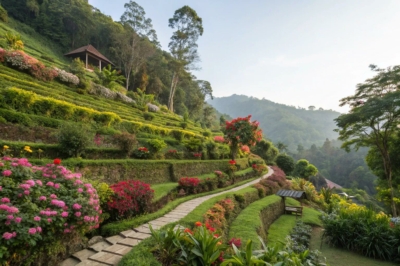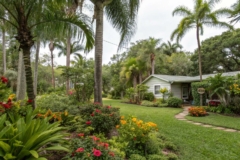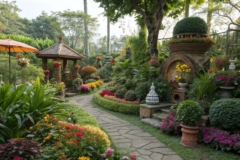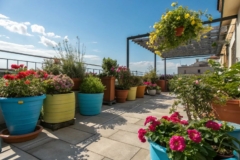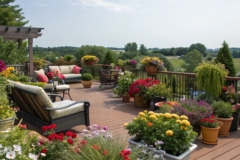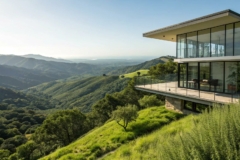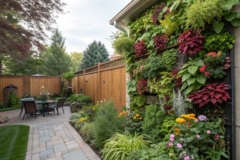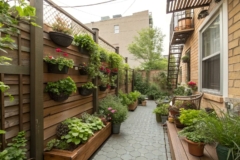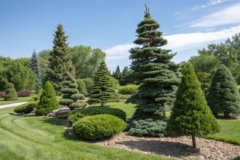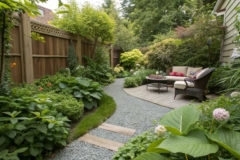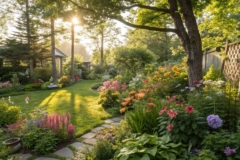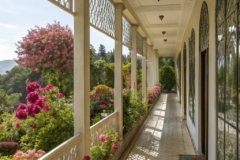1. Try a Vertical Garden
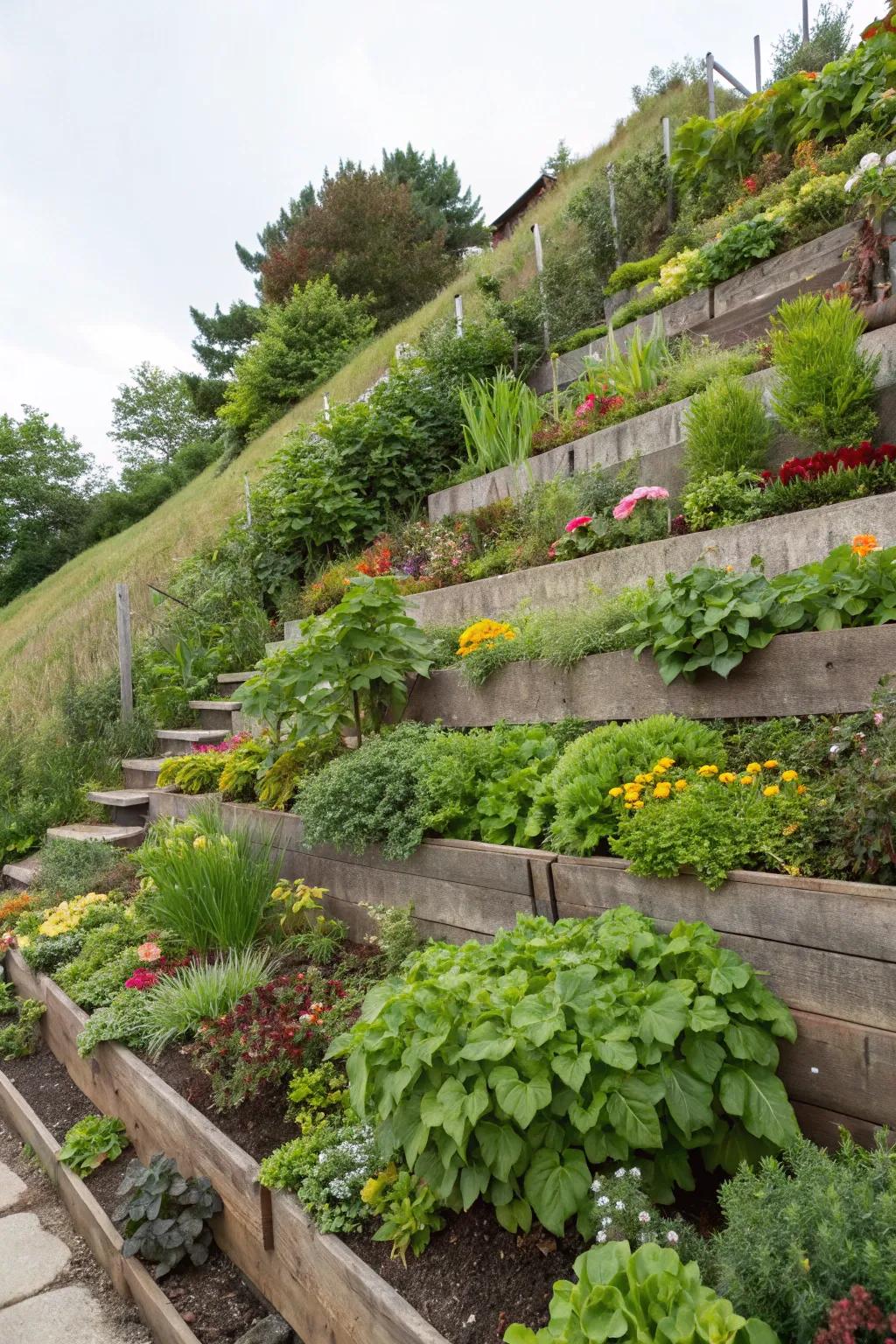
Vertical gardens can be a unique way to utilize vertical space on slopes. They add a modern touch and are perfect for growing herbs and small flowers.
A few suggestions:
- Wall-mounted Planter Kit: Maximize your hill space with a wall-mounted planter kit for easy herb and flower growing.
- Stackable Vertical Garden Planters: Create lush vertical gardens on slopes with stackable planters, perfect for small flowers and herbs.
- Hanging Vertical Garden System: Transform your hillside with a hanging garden system, ideal for modern, space-saving gardening.
2. Grow a Herb Spiral
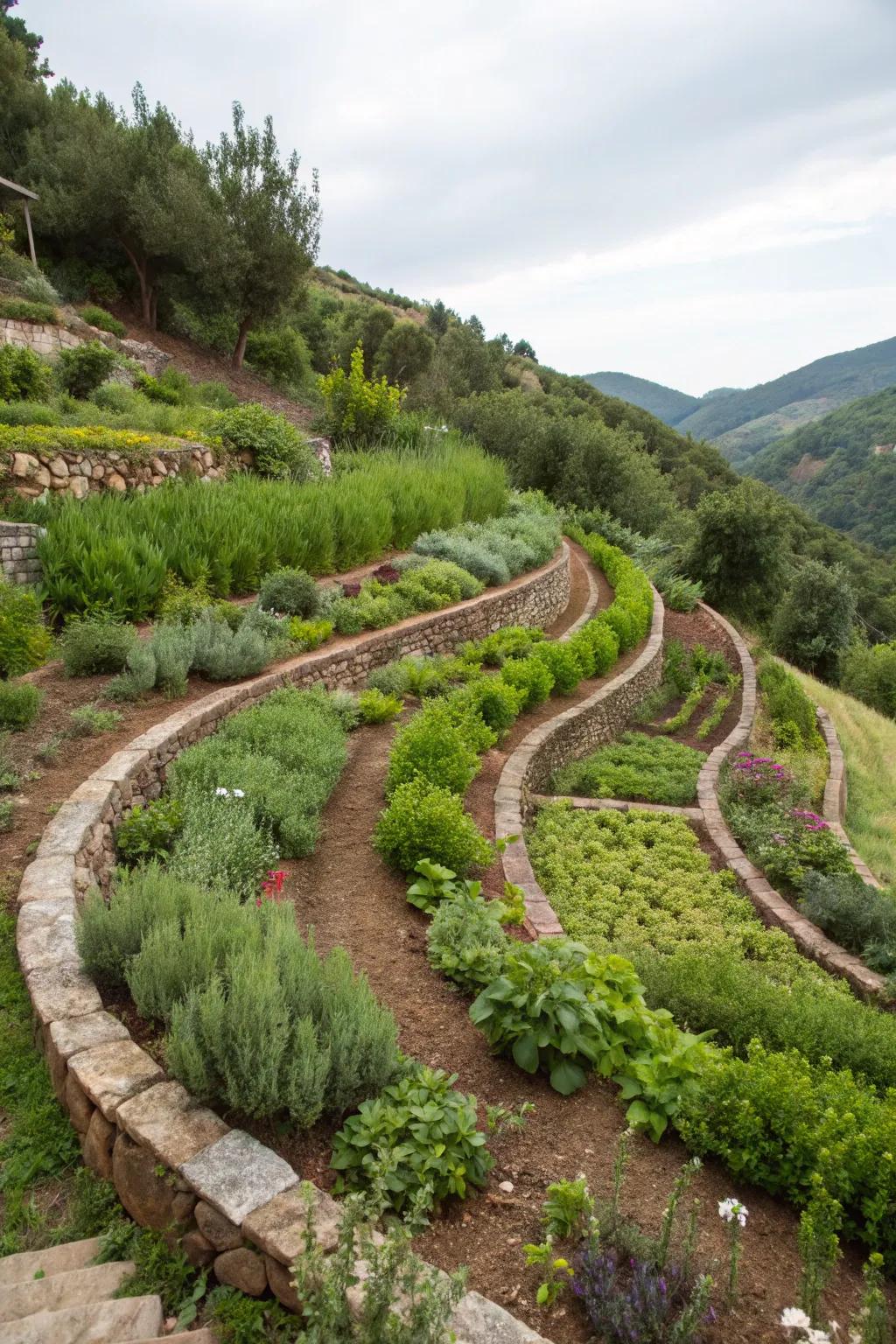
A herb spiral is a creative way to maximize space and create microclimates for different herbs. It’s a functional and attractive feature in any hillside garden.
These products might help:
- Spiral Garden Kit: Transform your garden hillside into a stunning herb spiral easily and effectively.
- Organic Herb Seeds Pack: Start your herb spiral with a diverse pack of organic seeds for various climates.
- Garden Soil for Herbs: Ensure healthy growth in your herb spiral with high-quality, nutrient-rich garden soil.
3. Use Mulch for Moisture Retention
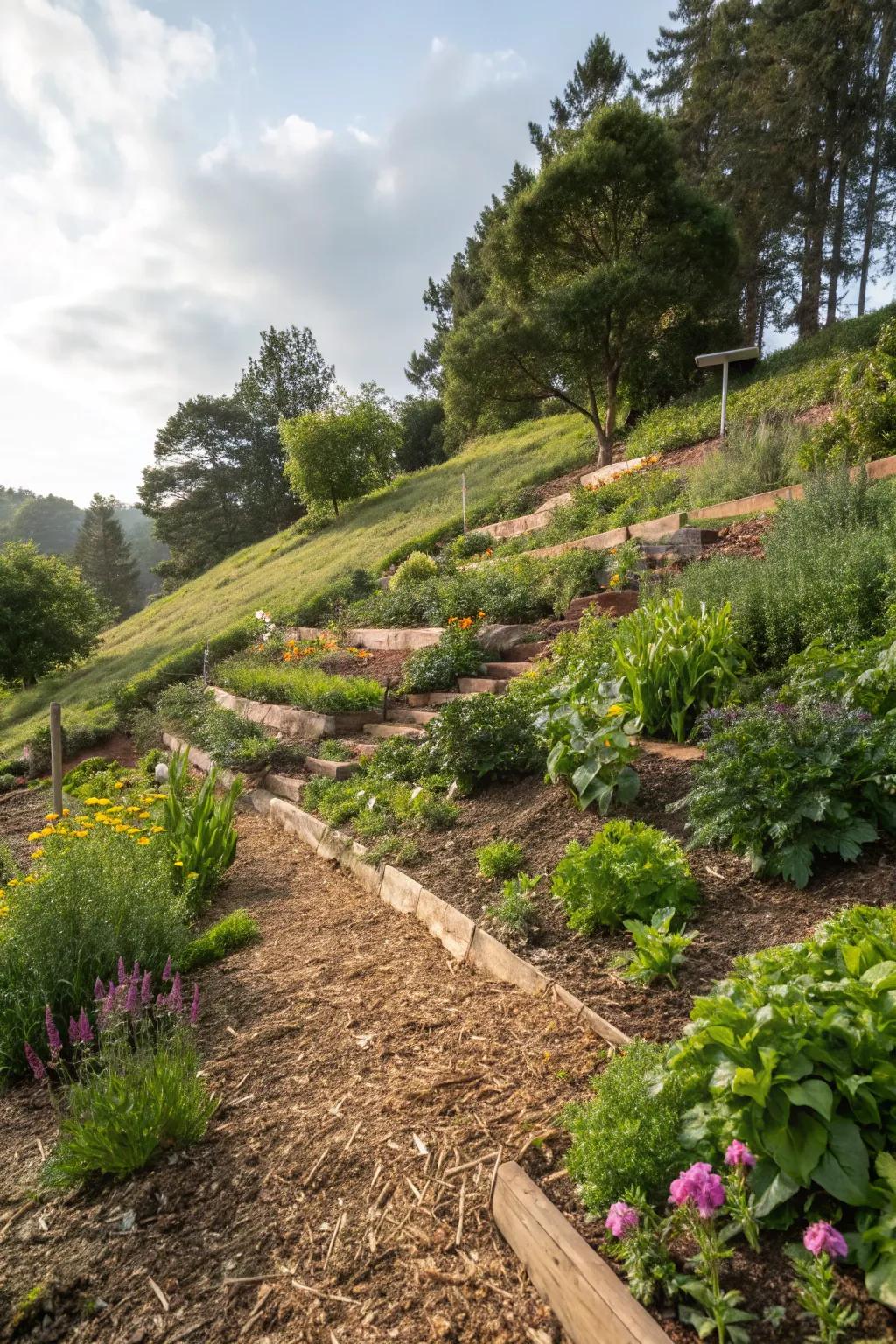
Mulching helps retain moisture and suppress weeds on a hill. It’s a simple solution that keeps your plants happy and your garden looking tidy.
You might like:
- Organic Mulch: Improve soil moisture and suppress weeds with this eco-friendly organic mulch for your hillside garden.
- Landscape Fabric: Enhance moisture retention and reduce weed growth using durable landscape fabric on your garden slope.
- Mulch Spreader: Efficiently spread mulch over large areas of your hillside garden with this handy mulch spreader.
4. Install Solar Lights for Ambiance
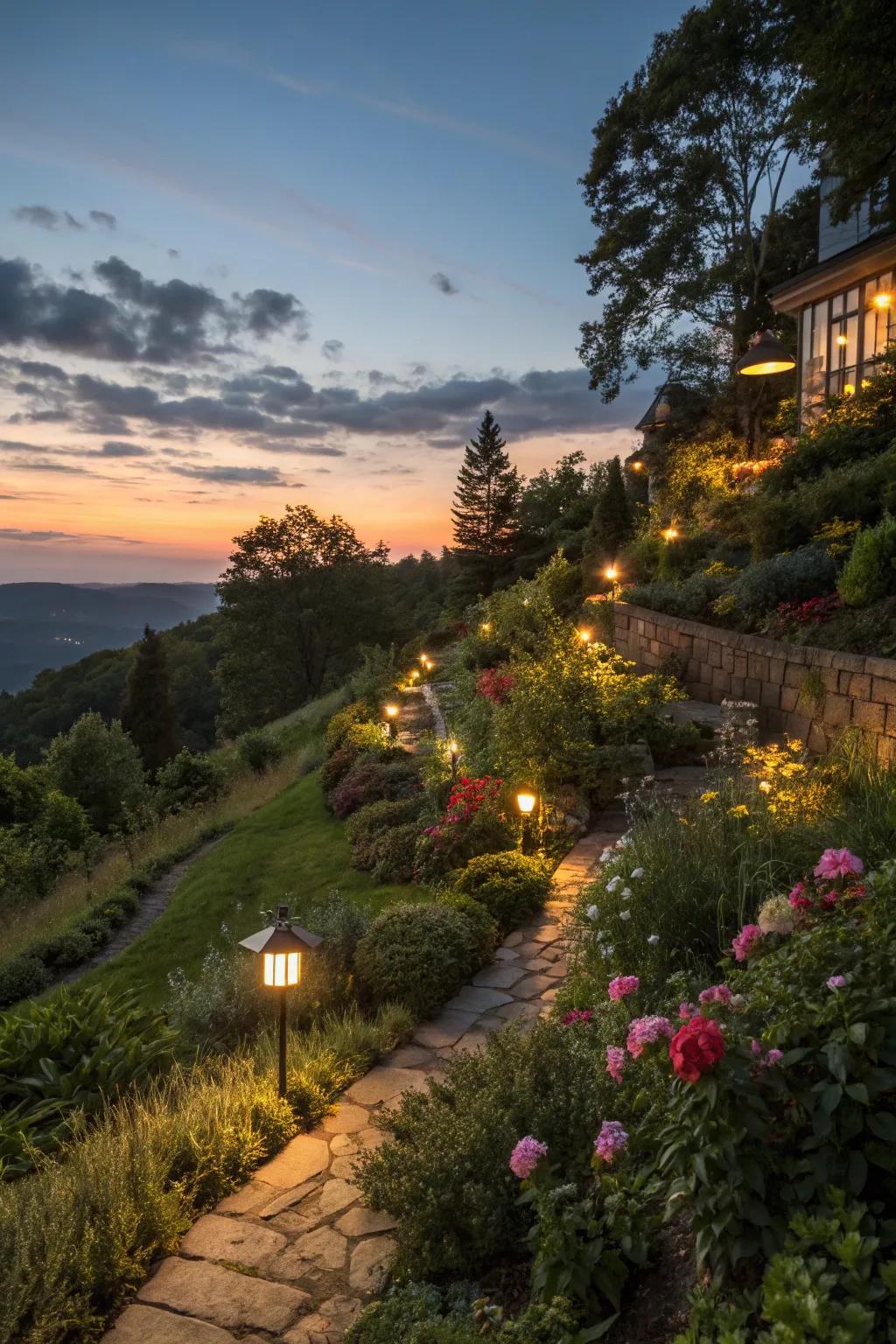
Adding solar lights along pathways or steps adds a magical glow to your hillside garden. They’re eco-friendly and highlight your garden’s beauty at night.
You might give these a try:
- Outdoor Solar Pathway Lights: Illuminate your garden paths with eco-friendly solar lights, adding charm to your hillside retreat.
- Weatherproof Solar Garden Lights: Enhance your garden’s beauty at night with durable, weather-resistant solar lighting solutions.
- Decorative LED Solar Landscape Lights: Create a magical ambiance with decorative LED solar lights designed for stunning night-time displays.
5. Build Retaining Walls for Structure

Retaining walls are a must for steep slopes, providing essential support and defining garden spaces. They can be built from a variety of materials to suit any aesthetic preference.
Maybe worth checking out:
- Interlocking Retaining Wall Blocks: Create sturdy retaining walls easily with these versatile interlocking concrete blocks designed for slopes.
- Garden Wall Construction Guide: Master the art of building retaining walls with this comprehensive step-by-step guidebook.
- Retaining Wall Building Kit: Simplify your DIY retaining wall project with this all-in-one building kit, perfect for beginners.
6. Embrace Terracing for Stability
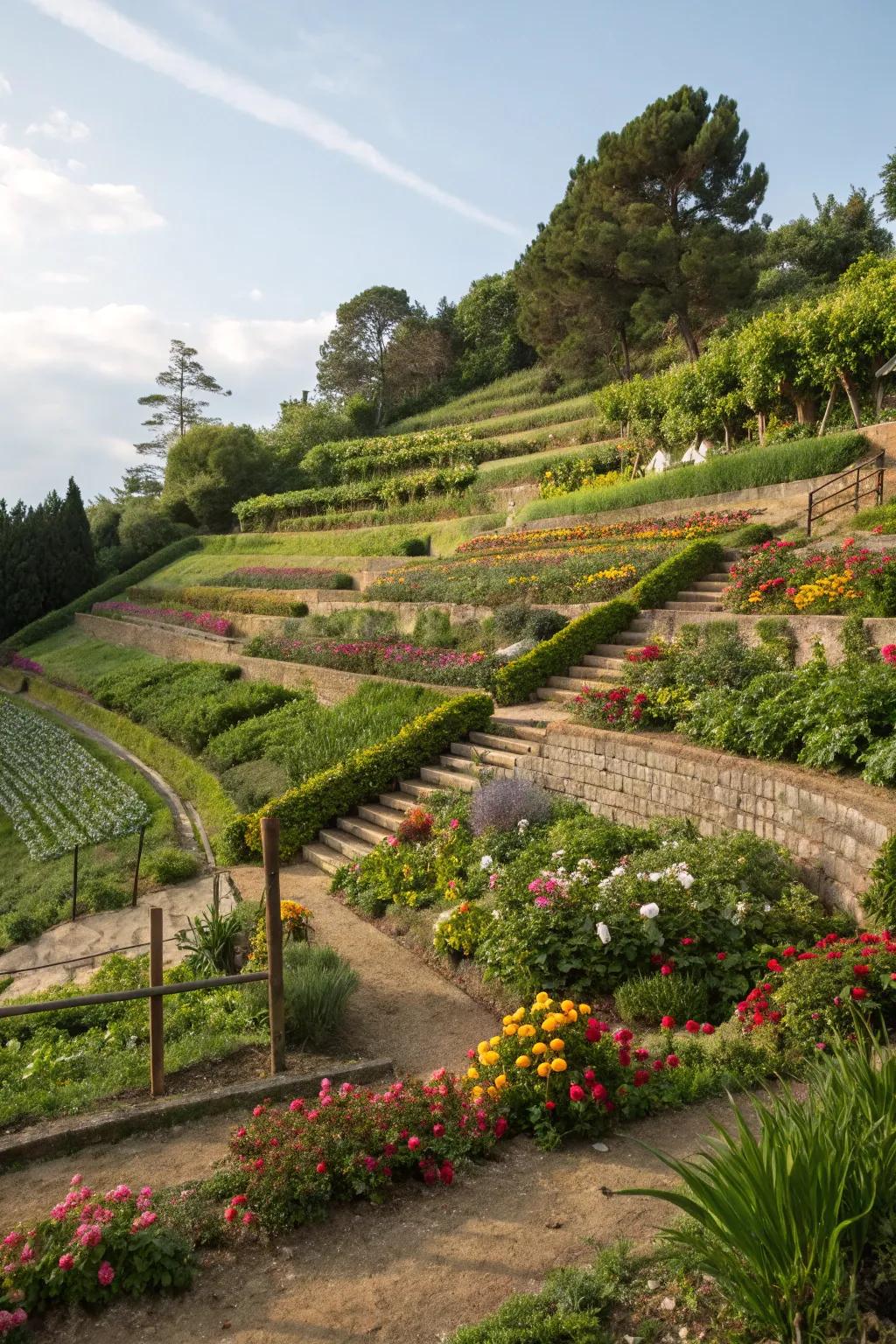
One of the most effective ways to garden on a hill is by creating terraces. They not only prevent erosion but also provide flat planting areas that are easier to manage—trust me, your back will thank you!
Some handy options:
- Garden Terracing Kit: Easily create terraced garden beds on your hill to minimize erosion and enhance planting space.
- Retaining Wall Blocks: Build durable retaining walls for your terrace to support soil and plants effectively.
- Erosion Control Fabric: Prevent soil erosion while maintaining moisture with this essential fabric for hillside gardening.
7. Design a Stair Garden for Access

Incorporate stairs into your hillside garden for both beauty and practicality. These stairs can be lined with cascading plants, making every trip up the hill a scenic route.
Products that could assist:
- Stone Garden Steps: Enhance your hillside with durable stone steps for a natural and elegant garden design.
- Cascading Plants for Gardens: Add beauty to your stair garden with vibrant cascading plants for a lush, scenic ascent.
- LED Outdoor Path Lights: Illuminate your stair garden with LED path lights for safe, enchanting evening strolls.
8. Use Natural Fencing for Privacy
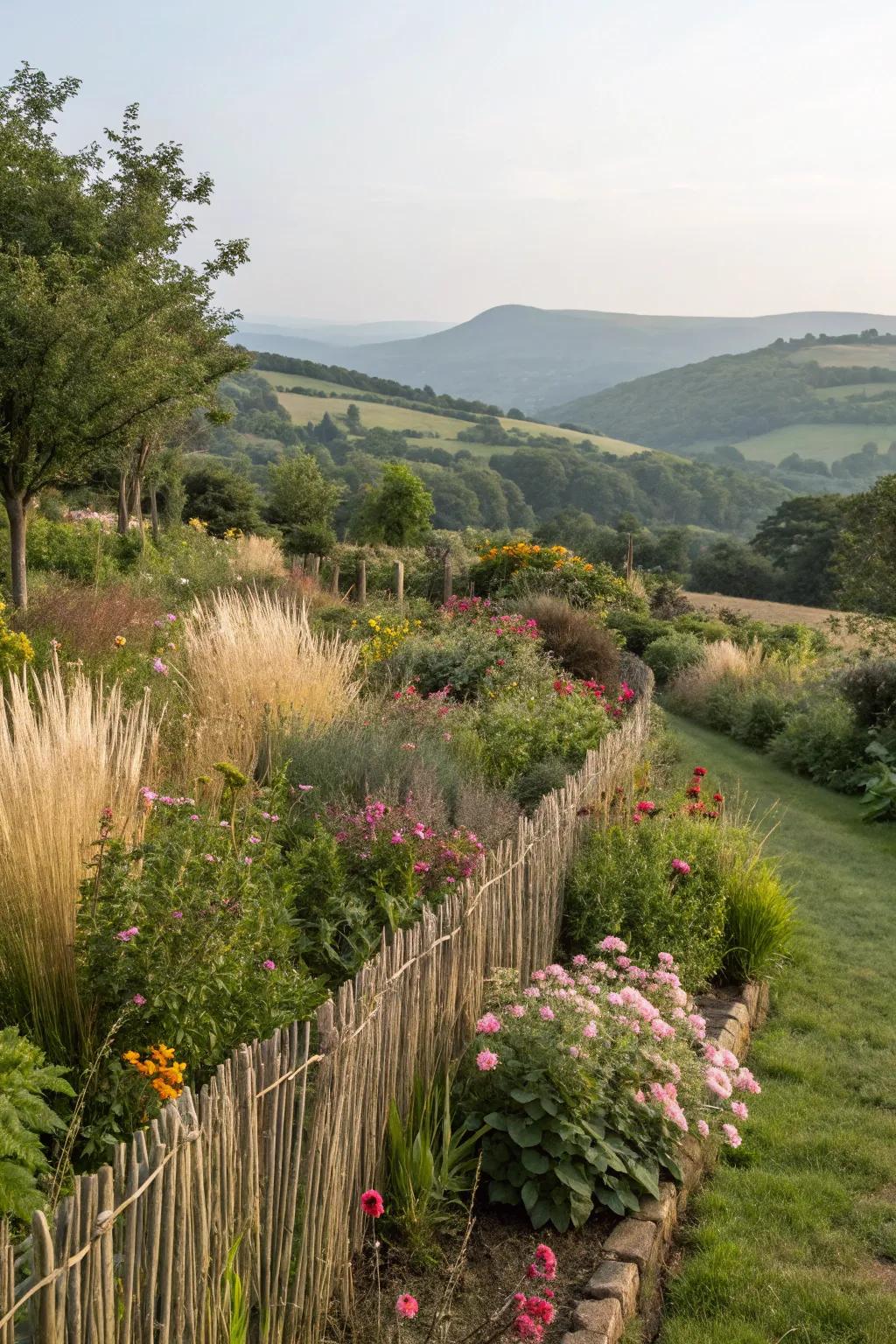
Natural fencing, like hedges or tall grasses, can add privacy to your hillside garden. They blend beautifully into the landscape while offering a sense of seclusion.
Possibly helpful picks:
- Fast-Growing Privacy Hedges: Enhance your garden’s privacy with dense, fast-growing hedges that blend naturally into the landscape.
- Ornamental Tall Grasses: Add elegance and privacy to your hillside garden with beautiful ornamental tall grasses.
- Natural Bamboo Fencing: Create a rustic aesthetic and enjoy more privacy with eco-friendly natural bamboo fencing.
9. Construct Raised Beds for Versatility
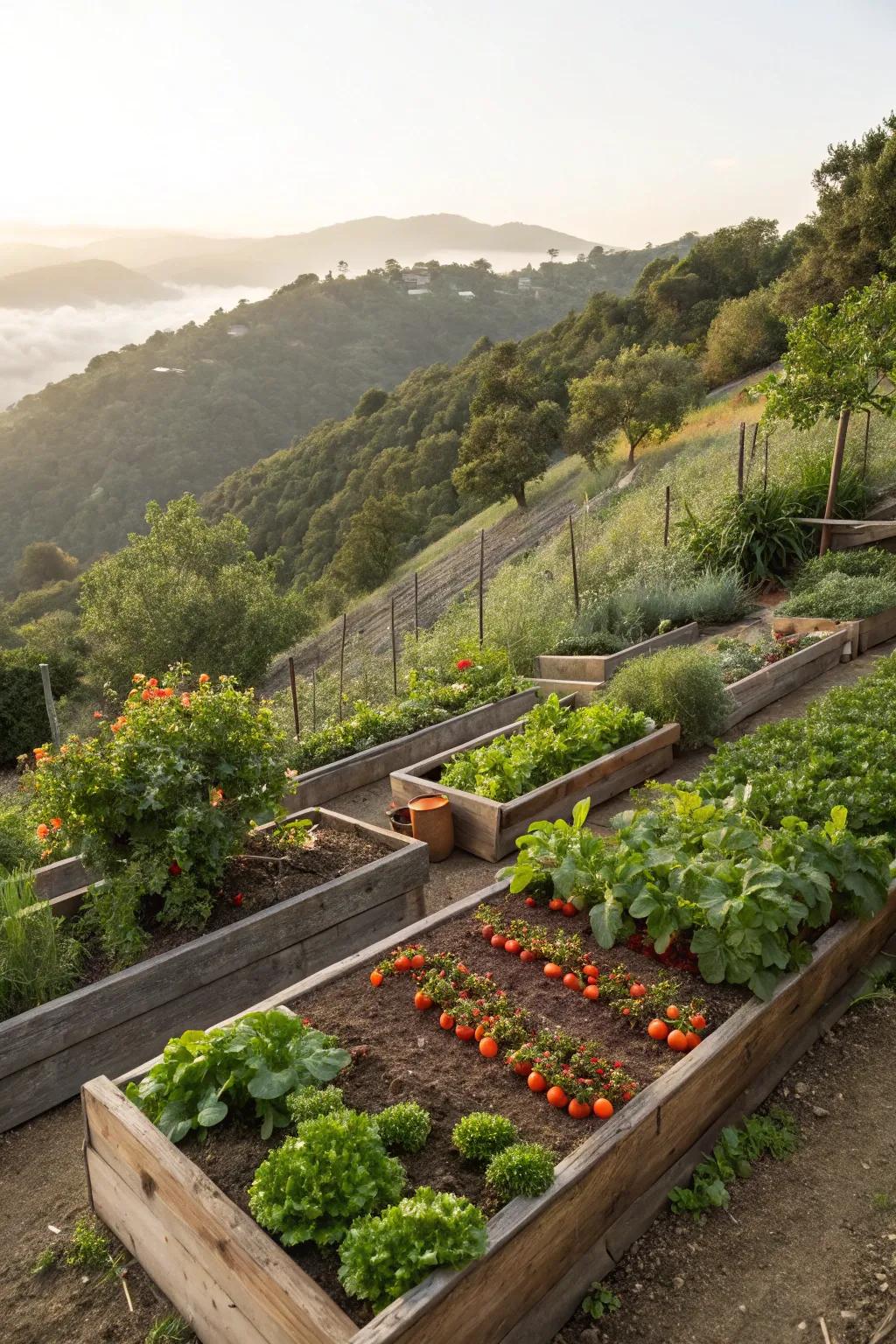
Raised beds on a slope offer excellent drainage and are perfect for growing a variety of plants. They also make gardening more accessible, sparing you from bending over too much.
May just do the trick:
- Wooden Raised Garden Bed Kit: Elevate your gardening game with a wooden bed kit, ensuring durability and style for your slope.
- Gardening Soil Mix for Raised Beds: Enhance plant growth with premium soil mix, perfect for drainage and nutrition in raised beds.
- Ergonomic Gardening Tools Set: Make gardening easy and enjoyable with ergonomic tools designed for comfort and efficiency.
10. Incorporate Artistic Sculptures
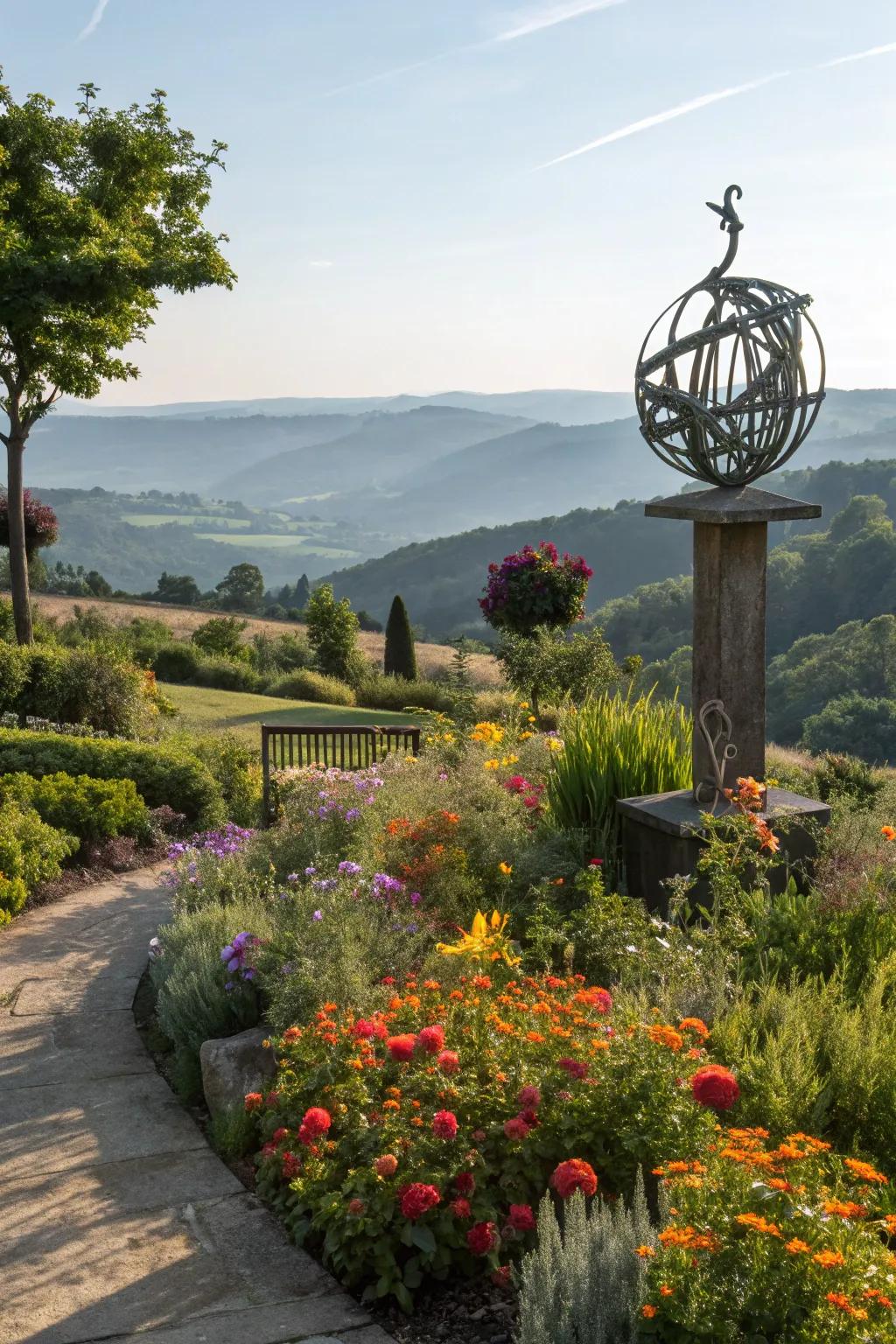
Adding sculptures or art pieces can give your hillside garden a focal point. Choose pieces that complement your garden’s theme and add a personal touch.
Consider these options:
- Garden Sphere Sculpture: Enhance your hillside garden with a sphere sculpture that captivates and complements your landscape design.
- Metal Garden Art Pedestal: Elevate your garden’s aesthetics with a robust pedestal, perfect for displaying striking art pieces.
- Outdoor Abstract Sculpture: Add a touch of modern elegance to your garden with an abstract outdoor sculpture piece.
11. Create a Rock Garden for Texture
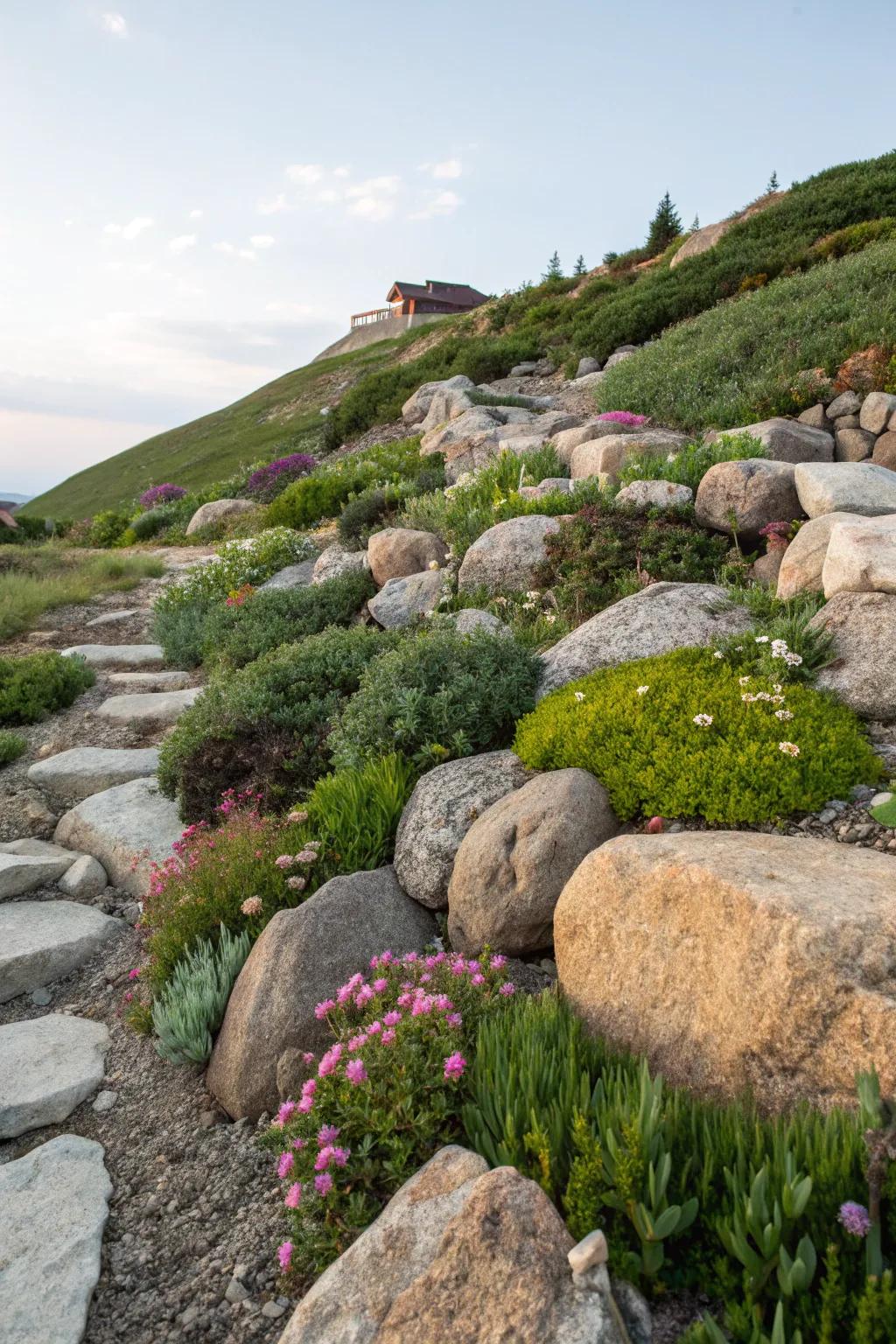
Adding rocks and boulders can turn a tricky slope into a breathtaking rock garden. These natural elements stabilize the soil and add an earthy elegance that always draws compliments.
A few helpful options:
- Landscape Edging Stones: Enhance your rock garden’s structure and elegance by adding sturdy landscape edging stones.
- Rock Garden Plant Collection: Complement your rocks with vibrant plant collections that thrive in sloped and rocky environments.
- Soil Stabilization Fabric: Support your garden’s foundation with durable soil stabilization fabric to prevent erosion.
12. Create Microclimates with Strategic Planting

Use the slope to your advantage by planting heat-loving plants on sunny spots and shade-tolerant ones in cooler areas. This way, you can grow a wider variety of plants.
Some ideas to consider:
- Sunlight Measuring Tool: Identify sunny spots effectively with this tool. Optimize planting locations for heat-loving plants.
- Shade-Tolerant Plant Seeds: Expand your garden’s variety. Plant these seeds in cooler, shaded areas of your slope.
- Landscape Fabric: Control soil erosion on your hillside garden and promote healthy plant growth with this fabric.
13. Experiment with Alpine Plants
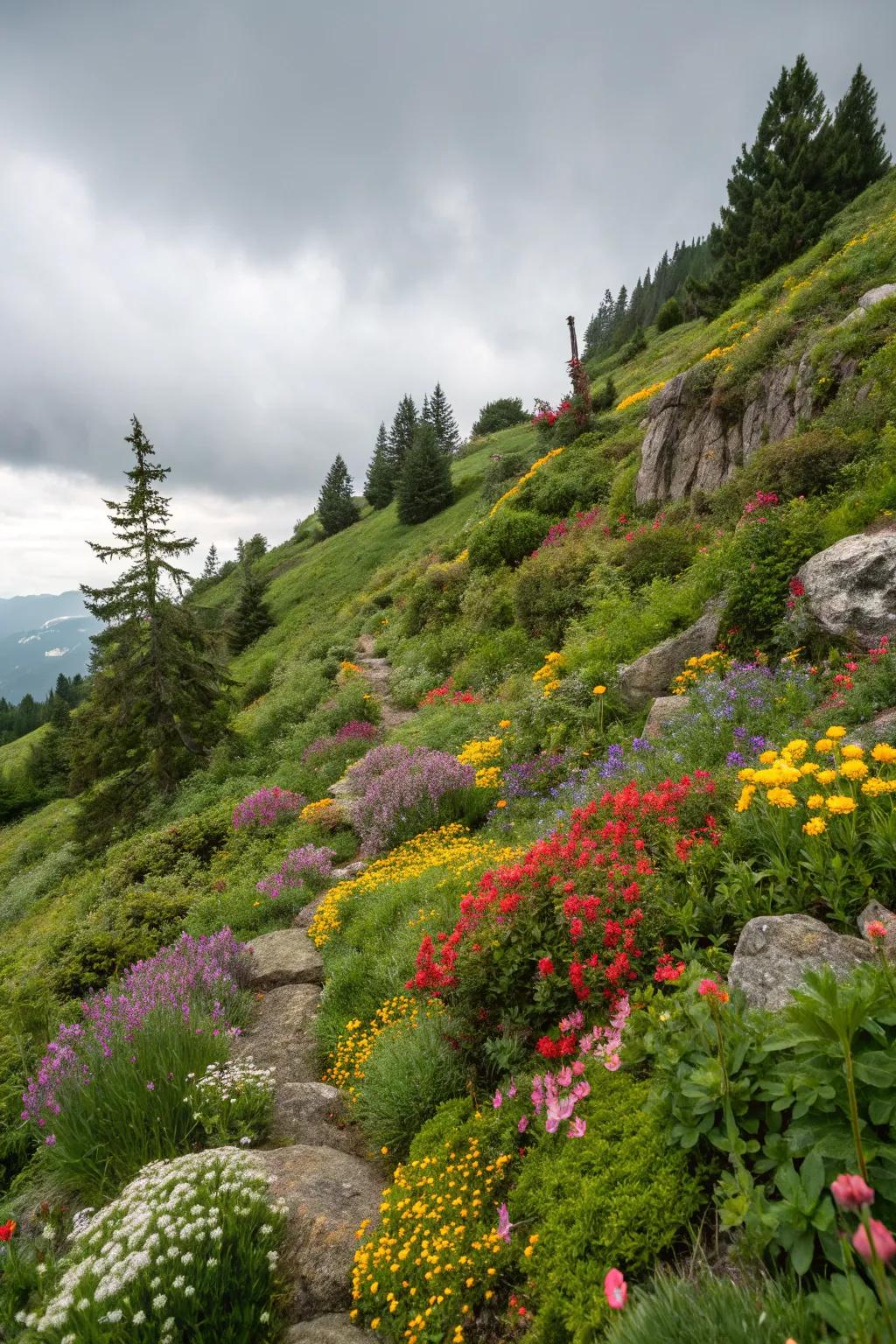
Alpine plants are adapted to rocky, sloped environments and can add a unique touch to your garden. These hardy plants will thrive in crevices and bring unexpected beauty.
Items that may come in handy:
- Alpine Plant Seed Mix: Enhance your hill garden with a variety of hardy alpine plant seeds. Try them today!
- Rock Garden Soil Mix: Optimize growth for alpine plants with specialized rock garden soil. Give it a try now!
- Garden Hand Tools Set: Equip yourself with durable tools for planting and maintaining alpine gardens. Order your set now!
14. Design a Play Area for Kids

Transform part of your hillside into a playful area with swings or a slide. It’s a great way to make the most of your space while keeping the little ones entertained.
Check if these fit your needs:
- Outdoor Swing Set: Create joyful play moments with a durable swing set, perfect for your hillside landscape.
- Children’s Slide: Add excitement to your hillside garden with a colorful, safe children’s slide for endless fun.
- Playground Mulch: Ensure safety in your play area using quality playground mulch for a soft, secure landing.
15. Add a Water Feature for Tranquility

A cascading waterfall or gentle stream can transform your hill into a peaceful retreat. Water features not only enhance visual appeal but also bring soothing sounds to your garden.
Possibly handy products:
- Garden Waterfall Kit: Install this easy-to-use waterfall kit for an instant soothing effect in your garden.
- Outdoor Water Pump: Ensure steady water flow with this durable and efficient outdoor water pump for your feature.
- Artificial Stream Rocks: Enhance your water feature with realistic rocks that blend seamlessly into your garden landscape.
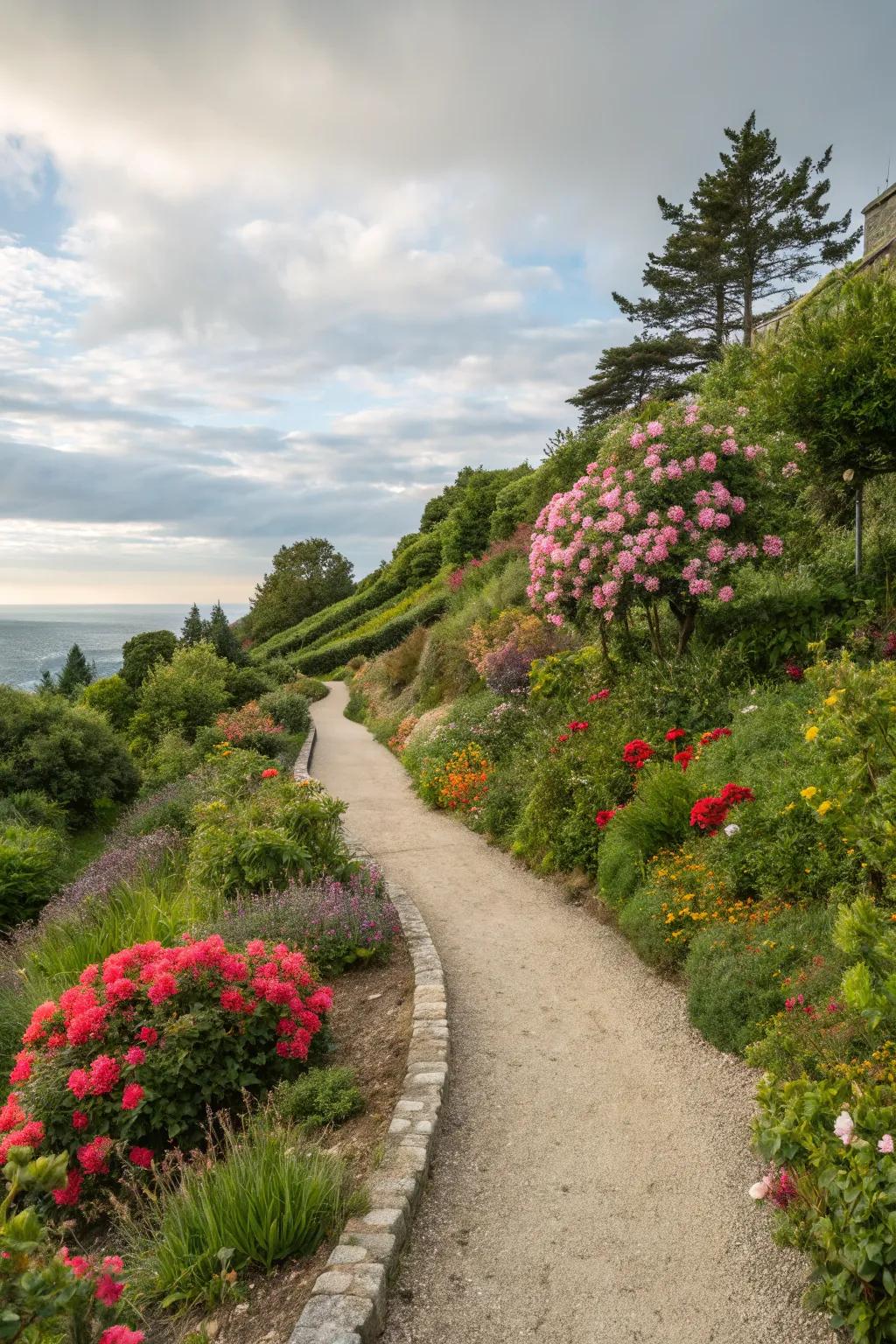
Pathways meandering through your hillside garden add charm and make maintenance a breeze. Choose materials like gravel or stepping stones for a natural look.
Check these products out:
- Decorative Gravel: Enhance your garden pathways with decorative gravel for a charming and natural appearance.
- Garden Stepping Stones: Create a whimsical garden path with stepping stones, adding charm and easy access.
- Landscape Edging: Define your garden pathways with durable landscape edging for a neat, tidy look.
17. Plant Fruit Trees for Bounty
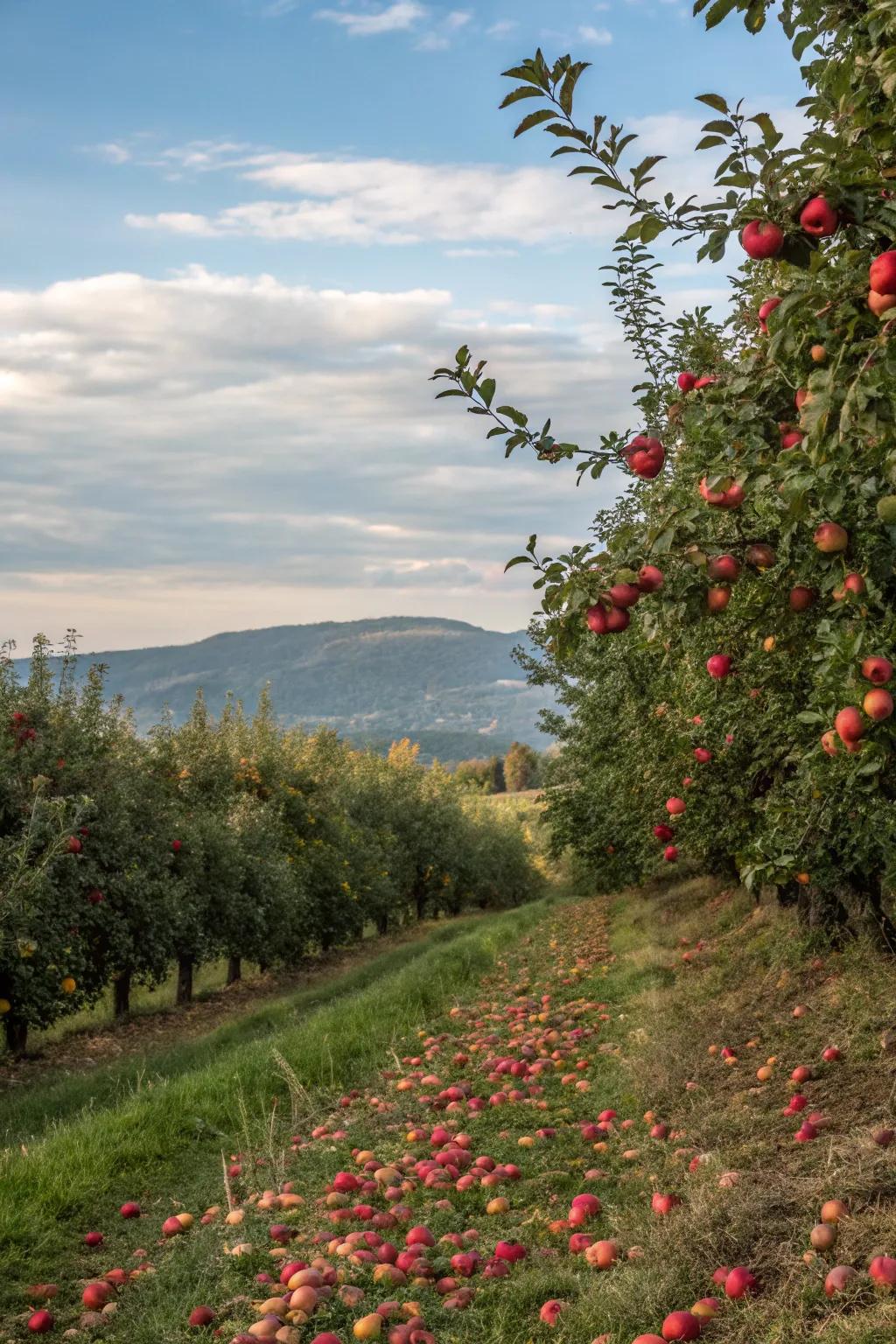
Fruit trees such as apple or peach can thrive on a slope, providing delicious harvests. Make sure to choose varieties suited to your climate and soil type.
A few things you might like:
- Fruit Tree Fertilizer: Boost your fruit trees’ growth and yield with this essential fertilizer blend for healthy harvests.
- Gardening Shovel: Simplify your tree planting process with a sturdy gardening shovel for all soil types.
- Tree Watering Bags: Ensure consistent hydration for your fruit trees with easy-to-use watering bags.
18. Incorporate a Seating Area
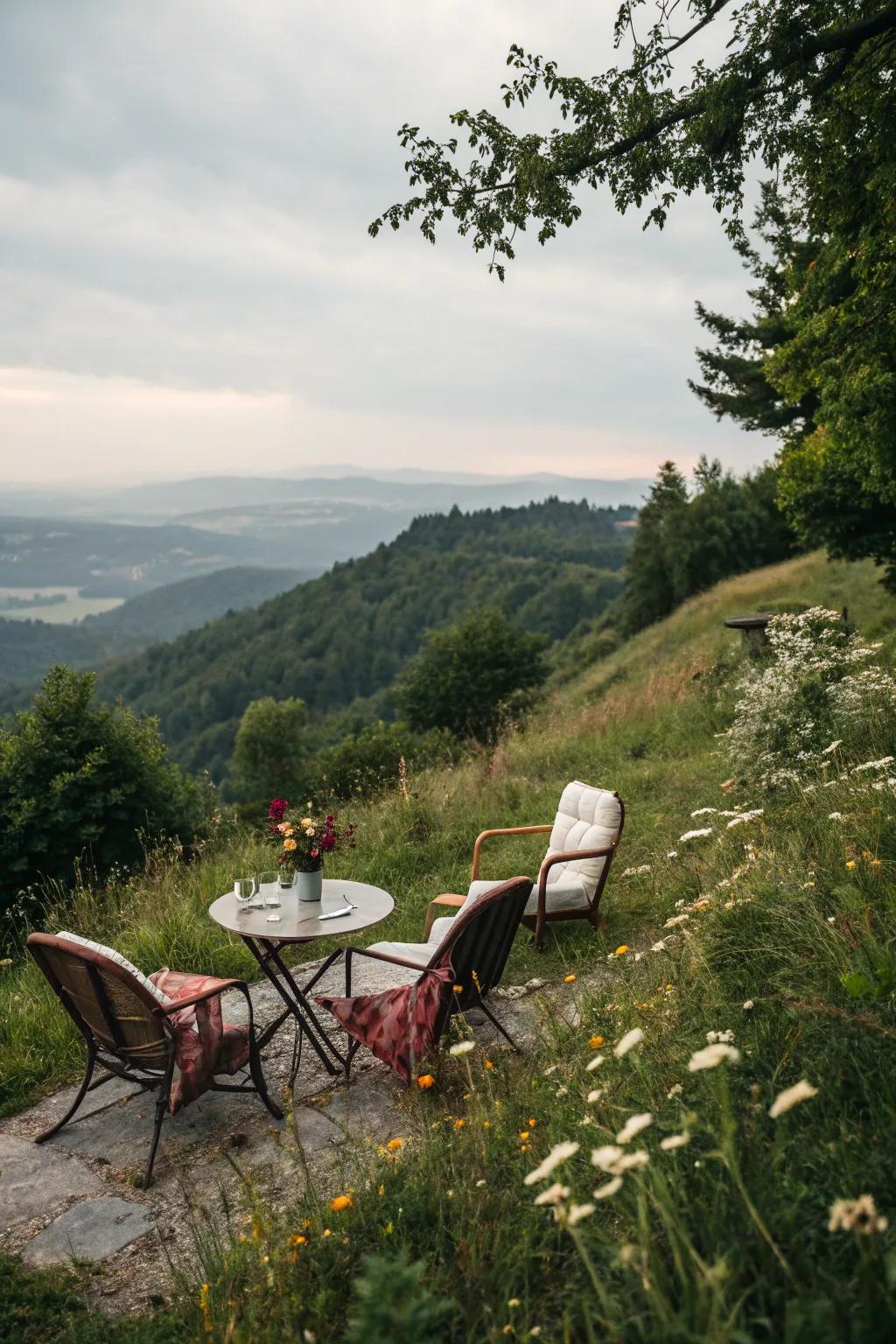
Create a cozy seating area on your hill to enjoy the view and relax. It’s the perfect spot for morning coffee or evening relaxation amidst nature.
Explore these options:
- Outdoor Bistro Set: Enhance your hilltop view with a stylish bistro set, perfect for relaxation and enjoyment.
- Weather-Resistant Cushions: Add comfort to your seating area with durable, weather-resistant cushions ideal for outdoor settings.
- Garden Side Table: Place your coffee or a book on a handy side table, completing your cozy garden retreat.
19. Mix and Match with Mixed Plantings

Combining different plant species adds vibrant texture and color, creating a dynamic hillside landscape. Plus, diverse plantings help stabilize the soil naturally.
Might be a good match:
- Drought-Tolerant Wildflower Seed Mix: Transform your hillside with colorful, diverse blooms while naturally stabilizing the soil.
- Erosion Control Jute Netting: Secure your plants and prevent soil erosion with durable, biodegradable jute netting.
- Perennial Ground Cover Plants: Enhance hillside stability and texture with low-maintenance perennial ground covers.
20. Plant Groundcovers for Erosion Control

Groundcovers like creeping thyme or sedum are excellent for holding soil in place. They spread quickly, reducing erosion while adding a lush green carpet.
Useful items to consider:
- Creeping Thyme Seeds: Grow a lush green carpet with creeping thyme seeds, perfect for erosion control on hills.
- Sedum Plant Pack: Establish effective erosion control with this variety pack of sedum plants, ideal for slopes.
- Groundcover Fertilizer: Boost your groundcovers’ growth with this specially formulated fertilizer for healthy, lush coverage.
21. Plant a Wildflower Meadow
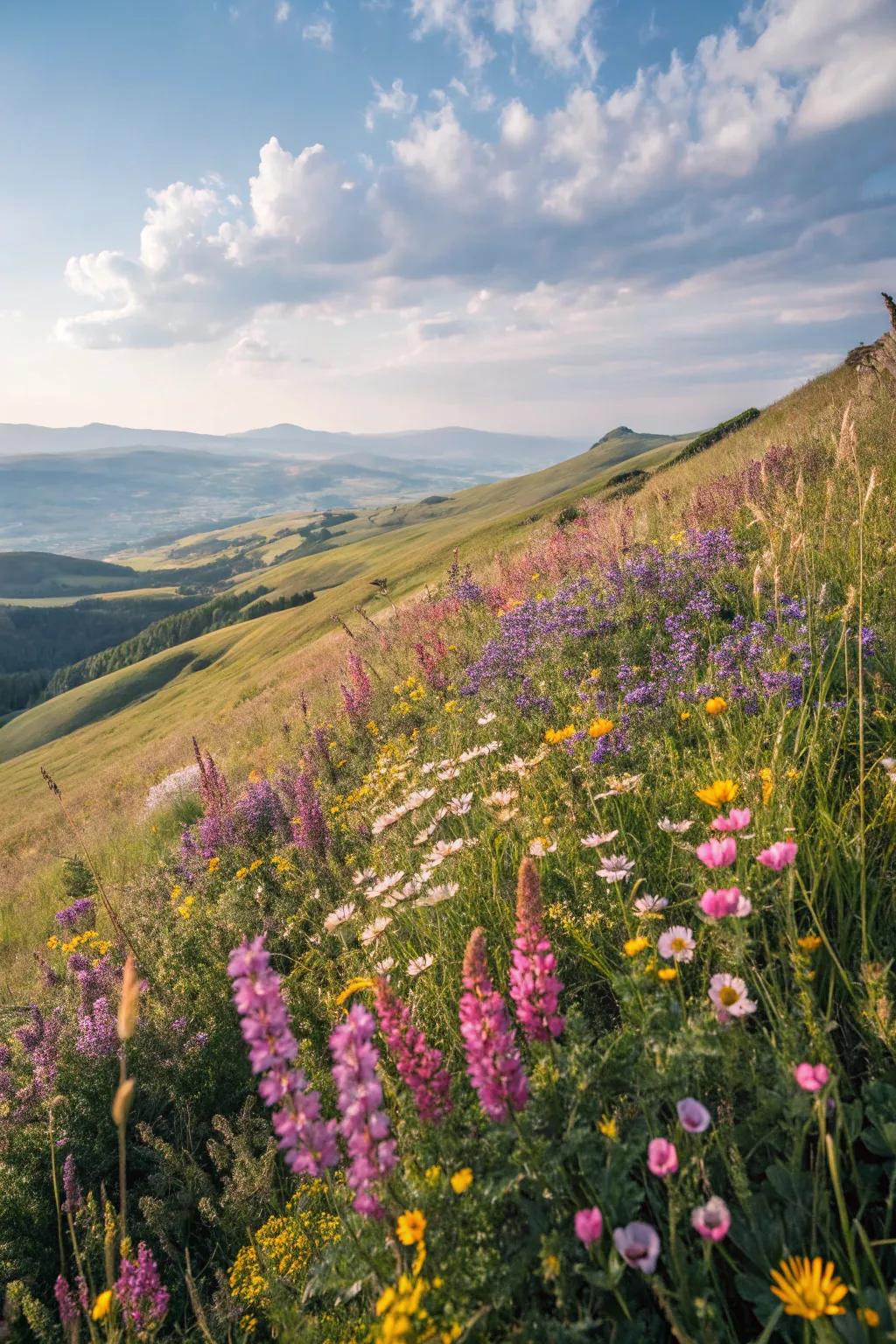
A wildflower meadow can transform a barren hillside into a colorful spectacle. These low-maintenance blooms attract pollinators and sway beautifully in the breeze.
A few relevant products:
- Wildflower Seed Mix: Attract pollinators by planting a diverse mix of wildflowers in your hillside garden.
- Garden Hand Tools Set: Equip yourself with essential tools for planting and maintaining your wildflower meadow with ease.
- Organic Fertilizer for Flowers: Boost growth and nourish your wildflowers naturally with this organic flower fertilizer.
